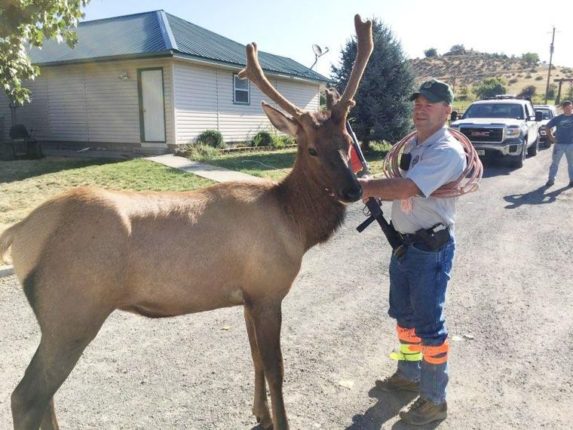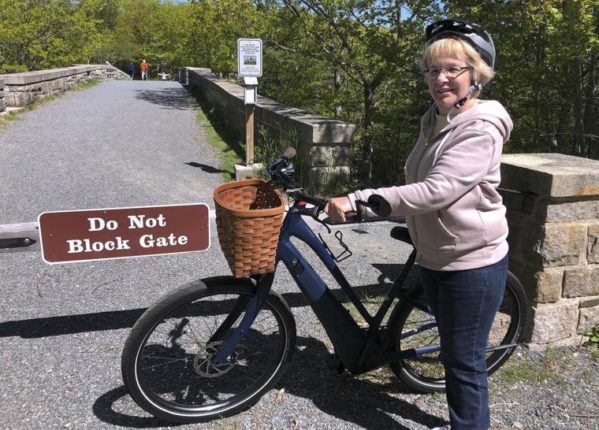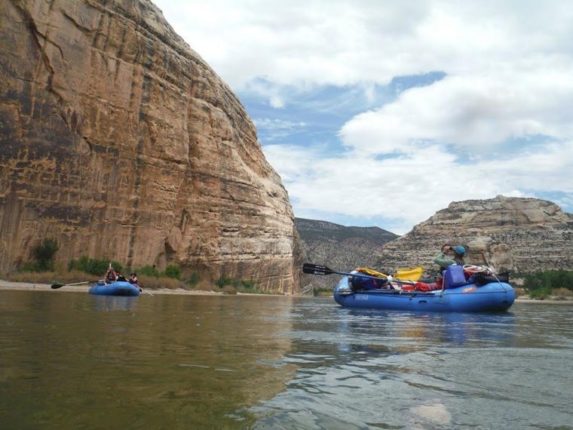Motorized electric bicycles may soon be humming along serene trails in national parks and other public lands nationwide. It’s part of a new Trump administration order — hotly opposed by many outdoors groups — that will allow e-bikes on every federal trail where a regular bike can go.
Sales of the bikes, powered by both pedals and battery-driven small motors, are booming, and some aging or less fit people have sought the rule change. It will allow them to whirr up and down biking trails in the country’s roughly 400 national parks and other federally managed backcountry areas.
Interior Secretary David Bernhardt signed the order without fanfare last week, classifying e-bikes as non-motorized bikes.
The e-bikes “make bicycle travel easier and more efficient, and they provide an option for people who want to ride a bicycle but might not otherwise do so because of physical fitness, age, disability or convenience,” National Park Service Deputy Director P. Daniel Smith said in a statement Friday.
Welcoming the change in Bar Harbor, Maine, on Friday, Gordon Goodwin, 69, said he and his wife look forward to riding the 57 miles of carriage paths that meander throughout Acadia National Park.
The paths, offering stunning views of lakes, mountains, forests and the ocean, are popular with bicyclists, but e-bikes have had to stay on the park’s roads instead.
“We’re stoked. We’re really stoked,” Goodwin said. “There’s just too much traffic on the main park roads that you can’t enjoy them. It’ll be great to get in the park and see nature and all that stuff.”
But more than 50 hiking, horse-riding and other outdoor and conservation associations, including the Appalachian Trail Conservancy and Pacific Crest Trail Association, objected in a July letter to the Interior Department. They say the administration is fundamentally changing the nature of national parks with little or no public notice or study.
“If you’re hiking on a trail in Utah and you’re rounding a bend and something’s coming at you at 20 mph, that really changes the experience,” said Kristen Brengel, a vice president of the National Parks Conservation Association, a nonprofit that advocates for the national park system.
“It’s pretty jarring” to those who take to public lands to escape city noise and stress for nature, Brengel said. “You’re adding significant speed and a throttle to those trails.”
E-bikes are the fastest-growing segment of the bicycle industry, with U.S. sales jumping 72 percent to $144 million last year, according to the NPD Group, which tracks bike sales. The motorized bikes are popular with commuters and aging baby boomers who might not otherwise get out on a bicycle.
The bikes, which can cost $2,000 or more, combine the frame of a regular bike with lightweight batteries and electric motors.
In parks and other public lands as on city streets and sidewalks, people moving on vehicles powered by electric or gasoline engines frequently jostle for the right of way with people on foot or traditional bikes. In the National Park Service, officials over the decades have tried to carefully sort out rules and systems to minimize conflicts.
In their letter, the outdoor groups complained the decision to allow motorized bikes on bike trails breaks with policies dating back to the early 1970s confining cars, dirt bikes, all-terrain vehicles and all other motorized vehicles to roads and designated areas or trails on public lands.
Interior’s order allows motorized bikes that can go up to 28 mph to be classified as regular bikes.
“Parks are already having a shortage of staffs and rangers,” said Randy Rasmussen, whose organization, Back Country Horsemen of America, opposes the rules. “And now what: they’re supposed to be out there with radar guns? It’s unenforceable.”
He suspects riders going faster than permitted will create dangerous encounters with spooked horses.
The Interior statement said riders must use the motor only to boost their pedaling on the trails, and not zip along on motor power alone.
Bernhardt’s order gave agency officials 30 days to come up with public guidance on how the new policy will be carried out by the National Park and National Wildlife Refuge systems, and on land overseen by the Bureau of Land Management and Bureau of Reclamation.
The National Park Service said in a statement that public comment would be sought as it works to develop a revised rule on bicycle use.
Ashley Korenblat, an advocate for preserving public lands and CEO of Western Spirit Cycling in Moab, Utah, saw several upsides.
E-bikes could lead to fewer cars at congested national parks, she said. The bikes are quiet, not much faster than regular bikes and allow people who otherwise couldn’t physically ride to go cycling.
“You can bring grandma and a 7-year-old and the whole group will be able to stay together,” said Korenblat.
Adam Gariepy, manager of the Bar Harbor Bicycle Shop, said Friday he’s “tentatively happy” about the new rules. But he has reservations because some e-bikes like his can reach around 28 mph, he said. That speed could be dangerous on trails that have a mix of bicycle riders, horses and carriages, hikers, families and pets.
“It’s a two-edged sword. It’ll be great for older folks who are afraid of the hills and want to continue riding. But there should be some speed limit with them,” he said.
Park Service Deputy Director Smith said the parks “should be responsive to visitors’ interest in using this new technology wherever it is safe and appropriate to do.”
But Brengel, the parks conservation association official, noted the order comes in a season when thousands of volunteers with trail groups have been in the parks all summer improving trails.
“You put a policy out like this, and it’s a slap in the face,” she said.
Associated Press writer Brady McCombs contributed from Salt Lake City.






